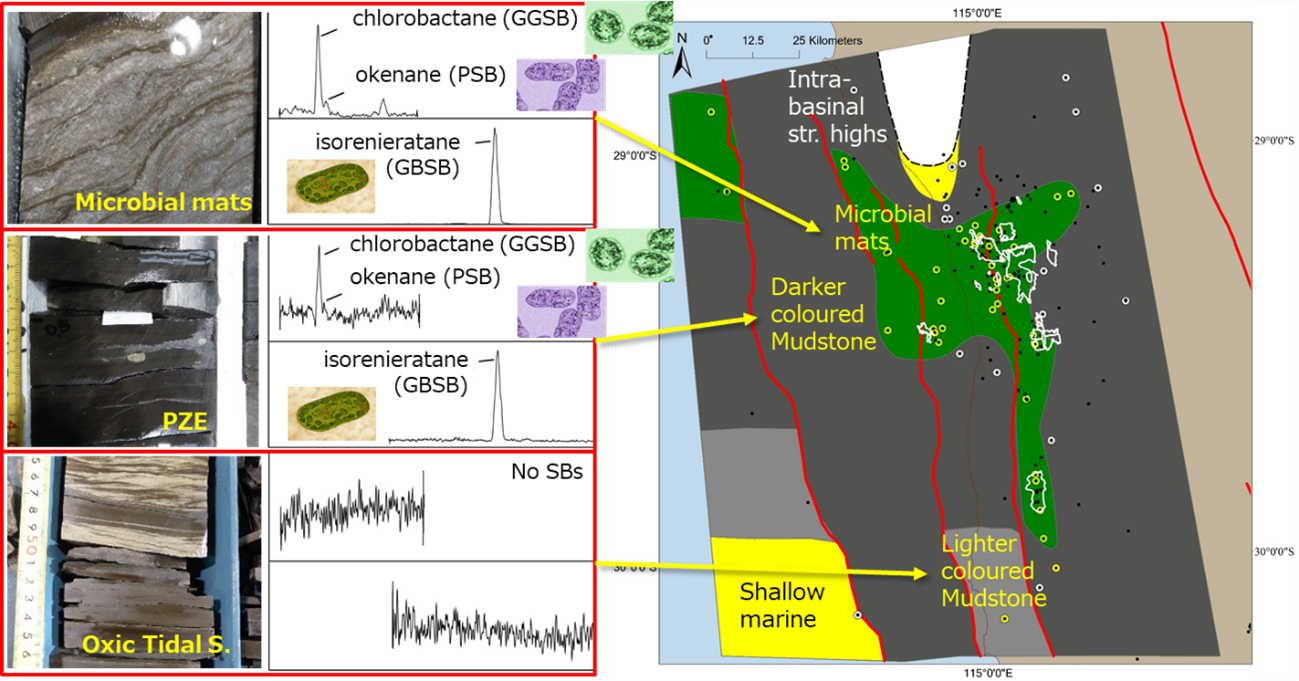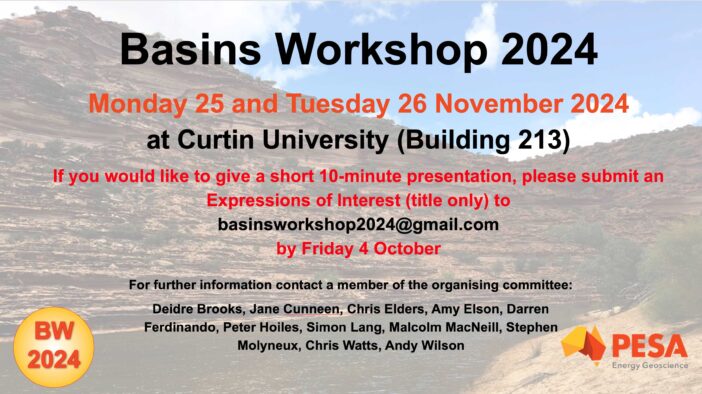
- This event has passed.
LIVE WEBINAR – Photic Zone Euxinia and Microbial Mat Development in the Early Triassic of the Perth Basin, Western Australia: Implications for Petroleum Systems
Tuesday, 8 March, 2022 @ 11:00 am - 12:00 pm (Australia/Perth time)
Free – $10.00
Kindly supported by Rock Flow dynamics 
This live webinar will take place at:
11am – Perth
12.30pm – Darwin
1pm – Brisbane
1:30pm – Adelaide
2pm – Canberra, Hobart, Melbourne, Sydney
Use the calendar link on this page to add this event in to your own calendar at the correct local time for your location.
Tickets are free for members (please log in to see this) and $10 for non members.
Please buy your tickets and immediately follow the link in the ticket e-mail (not the calendar invite or this webpage, which is just generic and not event specific) to set up your registration with the webinar software well in advance of the time of the talk. Once registered with the webinar software you will receive a reminder e-mail 1 hour beforehand.
Photic Zone Euxinia and Microbial Mat Development in the Early Triassic of the Perth Basin, Western Australia: Implications for Petroleum Systems
Presented by Takashi Taniwaki (Curtin University/INPEX)
Abstract
The end Permian mass extinction is the largest mass extinction event in the Phanerozoic. Massive volcanic activity associated with Siberian Trap eruptions is considered to be a critical factor that caused this extinction event. These eruptions emitted large amount of CO2 and other gasses, leading to global warming, anoxia and euxinia. Photic zone euxinia (PZE) forms when high H2S concentrations overlap with the photic zone. Anaerobic sulfur bacteria are active when PZE conditions occur and show distinct zonation (top: purple sulfur bacteria (PSB), middle: green-green sulfur bacteria (GGSB), bottom: green-brown sulfur bacteria (GBSB)). These sulfur bacteria make characteristic carotenoid pigments giving rise to specific biomarkers (okenane: PSB, chlorobactane: GGSB, and isorenieratane: GBSB). Microbial mats are also known to contain anaerobic sulfur bacteria (especially PSB and GGSB).
In the northern Perth Basin, the Kockatea Shale was deposited during the Late Permian to Early Triassic. The Lower Triassic Kockatea Shale shows lithological variations in core. Darker coloured mudstones were deposited in greater water depth under PZE conditions. Microbial mats with sulfur bacteria developed under shallow water settings on intra-basinal structural highs away from basin margins. These beds have a good source rock potential with high total organic carbon and hydrogen index. Lighter coloured mudstones were deposited under tidally influenced oxic settings without sulfur bacteria near basin margins. Chemo-isotope stratigraphy in each well suggests cyclic fluctuation of PZE and oxic conditions. This results in fluctuation in the depth of the chemocline (boundary of oxic and anoxic/euxinic conditions). Microbial mats are characterised by the higher abundance of okenane (PSB) and C33 n-alkylcyclohexane and lighter values of 13COM and 34S of pyrite compared to water column PZE. These parameters are good proxies for distinguishing between microbial mats and PZE.
In the northern Perth Basin, the Early Triassic Kockatea Shale is considered to be the primary source rock but possible source rocks in the Northern Carnarvon Basin include the Upper Jurassic Dingo Claystone as well as the Early Triassic Locker Shale. Many of the analysed petroleum samples from these basins contain carotenoids derived from sulfur bacteria, suggesting that their source rocks were deposited under conditions of PZE and/or derived from microbial mats. Given the similarity of biomarkers to the the major lithofacies contributing to the source rock In the northern Perth Basin, there is a possibility that the Lower Triassic Locker Shale is the source rock for the petroleum in the Tubridgi field on the Peedamullah Shelf of the Northern Carnarvon Basin. However, the possibility of charge from the Upper Jurassic Dingo Claystone cannot be excluded.



